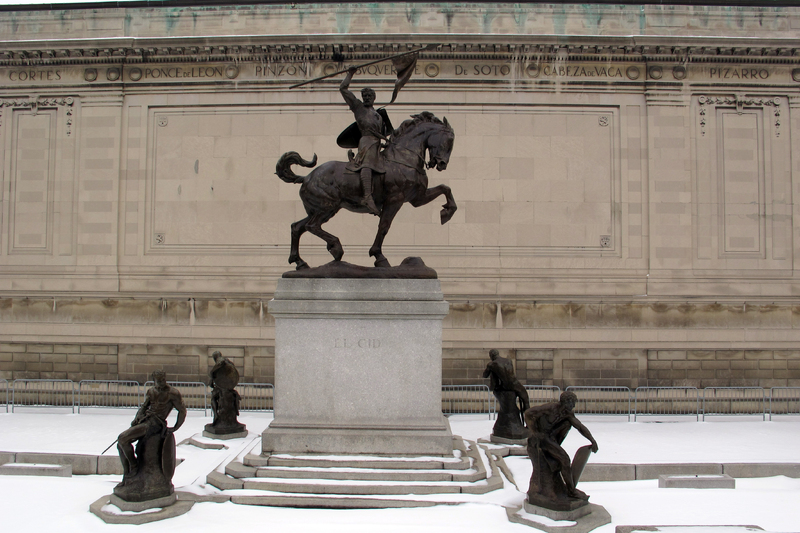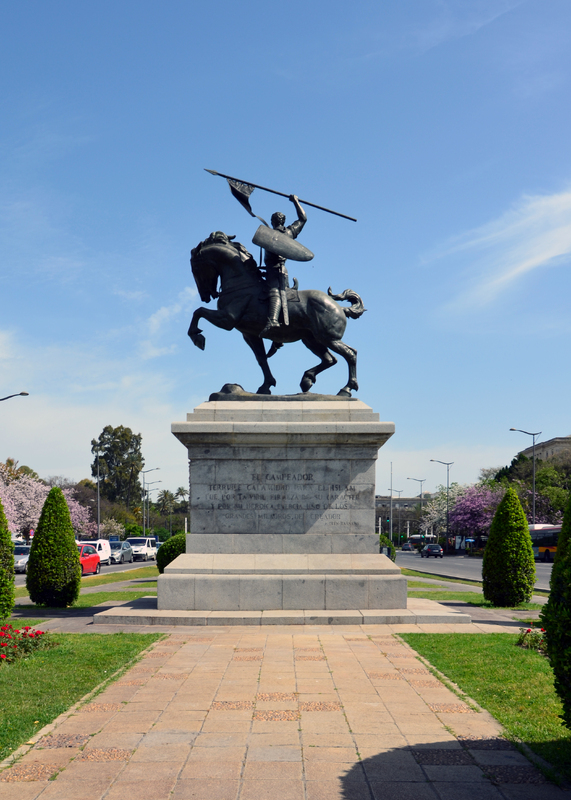Casting Process
Many of Anna's finished pieces were produced using a process called casting.
The process began with a sculpture. In Anna's case, she was highly skilled in modeling with clay. She began her career modeling small-scale sculptures of animals. When she began working on large-scale sculptures — especially those involving horses — she used massive amounts of clay to create each one.
When a modeled clay sculpture was finished, a plaster mold was created. Then a metal, such as bronze, was melted to a liquid state and poured into the mold; once cooled and hardened, the result was a cast sculpture in its final form.
Because a mold may be used more than once, it is possible to have multiple castings of a statue. Each is a unique piece of art and can be considered to be an original. This is the reason that many of Anna's most popular sculptures are found in multiple locations around the world.
This page features photographs of her sculpture formally titled El Cid Campeador. The first casting was installed at the Hispanic Society of American in New York, quickly followed by a second casting that was installed in Sevilla, Spain. Another was cast a few years later for Balboa Park in San Diego, California.
In this excerpt from an oral history interview for Archives of American Art, Anna Hyatt Huntington explains the multiple "originals" of her El Cid statue. H3
Dorothy Seckler: .... The sculpture of the first Cid, however, the original one, was given to Seville, wasn't that correct?
Anna Hyatt Huntington: The first one went to the Hispanic.
Dorothy Seckler: Oh, it did? The accounts in the encyclopedias really vary — some of them give the one at the Hispanic as a replica.
Anna Hyatt Huntington: Well, they're all the same thing, you know, because they're all taken from the same plaster cast, you see. They are all really originals when you come down to it, only they were done in successive stages so that the first one that was done went to the Hispanic and then the second one I think went to Seville, that's right. There were five of them altogether.
While many of her works are cast in bronze — a favorite medium for many sculptors — Anna eventually began experimenting with aluminum. The metal was lightweight and durable, which allowed her sculptures to be more easily shipped across the country. The Fighting Stallions sculpture is one example of her work in aluminum.


